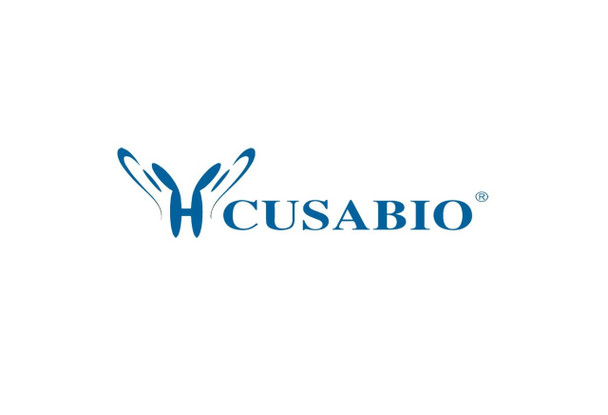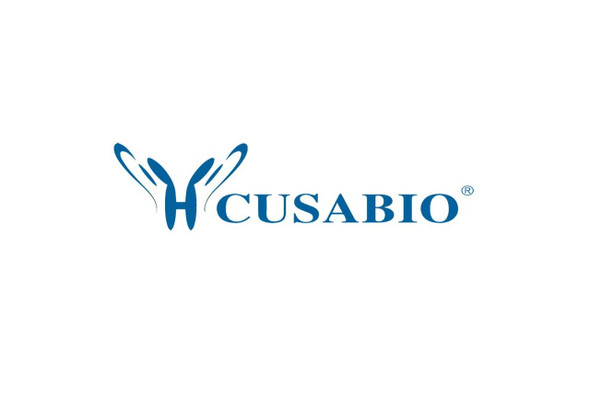Cusabio Human Recombinants
Recombinant Human Nuclear receptor ROR-alpha (RORA) | CSB-BP020069HU
- SKU:
- CSB-BP020069HU
- Availability:
- 28 - 38 Working Days
Description
Recombinant Human Nuclear receptor ROR-alpha (RORA) | CSB-BP020069HU | Cusabio
Alternative Name(s): Nuclear receptor RZR-alpha (Nuclear receptor subfamily 1 group F member 1) (RAR-related orphan receptor A) (Retinoid-related orphan receptor-alpha) (NR1F1) (RZRA)
Gene Names: RORA
Research Areas: Cancer
Organism: Homo sapiens (Human)
AA Sequence: MMYFVIAAMKSQIEIIPCKICGDKSSGIHYGVITCEGCKGFFRRSQQSNATYSCPRQKNCLIDRTSRNRCQHCRLQKCLAVGMSRDAVKFGRMSKKQRDSLYAEVQKHRMQQQQRDHQQQPGEAEPLTPTYNISANGLTELHDDLSNYIDGHTPEGSKADSAVSSFYLDIQPSPDQSGLDINGIKPEPICDYTPASGFFPYCSFTNGETSPTVSMAELEHLAQNISKSHLETCQYLREELQQITWQTFLQEEIENYQNKQREVMWQLCAIKITEAIQYVVEFAKRIDGFMELCQNDQIVLLKAGSLEVVFIRMCRAFDSQNNTVYFDGKYASPDVFKSLGCEDFISFVFEFGKSLCSMHLTEDEIALFSAFVLMSADRSWLQEKVKIEKLQQKIQLALQHVLQKNHREDGILTKLICKVSTLRALCGRHTEKLMAFKAIYPDIVRLHFPPLYKELFTSEFEPAMQIDG
Source: Baculovirus
Tag Info: N-terminal 10xHis-tagged and C-terminal Myc-tagged
Expression Region: 1-468aa
Sequence Info: Full Length of Isoform 4
MW: 57.4
Purity: Greater than 85% as determined by SDS-PAGE.
Relevance: Nuclear receptor that binds DNA as a monomer to ROR response elements containing a single core motif half-site 5'-AGGTCA-3' preceded by a short A-T-rich sequence. Key regulator of embryonic development, cellular differentiation, immunity, circadian rhythm as well as lipid, steroid, xenobiotics and glucose metabolism. Considered to have intrinsic transcriptional activity, have some natural ligands like oxysterols that act as agonists or inverse agonists, enhancing or repressing the transcriptional activity, respectively. Recruits distinct combinations of cofactors to target genes regulatory regions to modulate their transcriptional expression, depending on the tissue, time and promoter contexts. Regulates genes involved in photoreceptor development including OPN1SW, OPN1SM and ARR3 and skeletal muscle development with MYOD1. Required for proper cerebellum development. Regulates SHH gene expression, among others, to induce granule cells proliferation as well as expression of genes involved in calcium-mediated signal transduction. Regulates the circadian expression of several clock genes, including CLOCK, ARNTL/BMAL1, NPAS2 and CRY1. Competes with NR1D1 for binding to their shared DNA response element on some clock genes such as ARNTL/BMAL1, CRY1 and NR1D1 itself, resulting in NR1D1-mediated repression or RORA-mediated activation of clock genes expression, leading to the circadian pattern of clock genes expression. Therefore influences the period length and stability of the clock. Regulates genes involved in lipid metabolism such as apolipoproteins APOA1, APOA5, APOC3 and PPARG. In liver, has specific and redundant functions with RORC as positive or negative modulator of expression of genes encoding phase I and phase II proteins involved in the metabolism of lipids, steroids and xenobiotics, such as CYP7B1 and SULT2A1. Induces a rhythmic expression of some of these genes. In addition, interplays functionally with NR1H2 and NR1H3 for the regulation of genes involved in cholesterol metabolism. Also involved in the regulation of hepatic glucose metabolism through the modulation of G6PC and PCK1. In adipose tissue, plays a role as negative regulator of adipocyte differentiation, probably acting through dual mechanisms. May suppress CEBPB-dependent adipogenesis through direct interaction and PPARG-dependent adipogenesis through competition for DNA-binding. Downstream of IL6 and TGFB and synergistically with RORC isoform 2, is implicated in the lineage specification of uncommitted CD4+ T-helper (T(H)) cells into T(H)17 cells, antagonizing the T(H)1 program. Probably regulates IL17 and IL17F expression on T(H) by binding to the essential enhancer conserved non-coding sequence 2 (CNS2) in the IL17-IL17F locus. Involved in hypoxia signaling by interacting with and activating the transcriptional activity of HIF1A. May inhibit cell growth in response to cellular stress. May exert an anti-inflammatory role by inducing CHUK expression and inhibiting NF-kappa-B signaling.
Reference: "Identification of nuclear receptor mRNAs by RT-PCR amplification of conserved zinc-finger motif sequences." Becker-Andre M., Andre E., Delamarter J.F. Biochem. Biophys. Res. Commun. 194:1371-1379(1993)
Storage: The shelf life is related to many factors, storage state, buffer ingredients, storage temperature and the stability of the protein itself. Generally, the shelf life of liquid form is 6 months at -20?/-80?. The shelf life of lyophilized form is 12 months at -20?/-80?.
Notes: Repeated freezing and thawing is not recommended. Store working aliquots at 4? for up to one week.
Function:
Involvement in disease:
Subcellular Location:
Protein Families:
Tissue Specificity:
Paythway:
Form: Liquid or Lyophilized powder
Buffer: If the delivery form is liquid, the default storage buffer is Tris/PBS-based buffer, 5%-50% glycerol. If the delivery form is lyophilized powder, the buffer before lyophilization is Tris/PBS-based buffer, 6% Trehalose, pH 8.0.
Reconstitution: We recommend that this vial be briefly centrifuged prior to opening to bring the contents to the bottom. Please reconstitute protein in deionized sterile water to a concentration of 0.1-1.0 mg/mL.We recommend to add 5-50% of glycerol (final concentration) and aliquot for long-term storage at -20?/-80?. Our default final concentration of glycerol is 50%. Customers could use it as reference.
Uniprot ID: P35398
HGNC Database Link: N/A
UniGene Database Link: N/A
KEGG Database Link: N/A
STRING Database Link: N/A
OMIM Database Link: N/A






